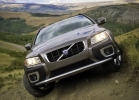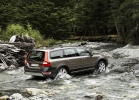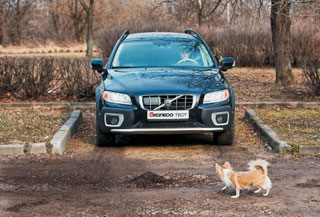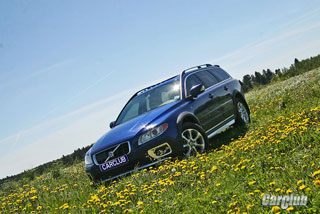Wilvo XC70 test drive since 2007
Through the late inspiration
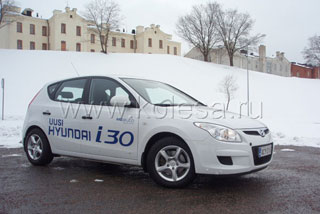 First of all, the Hyundai i30 was supposed to appear in Russia before its debut in Europe. So, at least, representatives of the company announced the Russian presentation of the car in August last year at the Interewno exhibition.
First of all, the Hyundai i30 was supposed to appear in Russia before its debut in Europe. So, at least, representatives of the company announced the Russian presentation of the car in August last year at the Interewno exhibition. But the Korean C-class has already appeared in the Old World, became a car of the year in Spain and even in distant Australia, and did not reach Russia. I had to go for him to Europe, not far: four hours of driving from St. Petersburg and now we are already handed the keys to the snow -white hatchback.
Should it be surprised that the European market preferred to Russian? Of course not. Although in Russia a three -bob body is no longer an indispensable component of the city car, the sedans are still more popular than the hatchbacks. So, from a marketing point of view, the appearance of the i30 is much more important for them all the more so since the Russian in the Hyundai lineup can choose Elantra, and the Koreans at the same time in golf class at one time could not offer anything at all: Elantra in Finland is not sold.
 The manufacturer’s desire to make completely different up to the name of the hatchback and the sedan of the same class is also clear. It is possible to expand the potential audience. As Toyota did, which has a practical Corolla and fashionable Auris. And Toyota for Hyundai, as you know, a certain landmark.
The manufacturer’s desire to make completely different up to the name of the hatchback and the sedan of the same class is also clear. It is possible to expand the potential audience. As Toyota did, which has a practical Corolla and fashionable Auris. And Toyota for Hyundai, as you know, a certain landmark. The fact that the i30 is less practical than the Elantra familiar to us is obviously right away. The hatchback is shorter than 25 cm, and the shortage falls on the trunk: 340 liters are very little. But the wheelbase is large (265 mm), and to passengers that front, that the rear is not crowded.
The new i30 is more powerful to Elantra: the headlight cut is not so rude, radiator grille made with a representative beard, and the vertical rear lights of the hatchback look much more spectacular than the banal stripes of the sedan. But there is no particular beauty here: the design is neat, notorious, but without a hint of shocking.
 The most attracted element of the salon of the chair: moderately tough, with excellent lateral support. You get behind the wheel and until you put your hands on it, I want to reap and press on the gas, almost without casting a glance at the neat dials of devices, thanks to the proprietary blue backlight, well read.
The most attracted element of the salon of the chair: moderately tough, with excellent lateral support. You get behind the wheel and until you put your hands on it, I want to reap and press on the gas, almost without casting a glance at the neat dials of devices, thanks to the proprietary blue backlight, well read. But the steering wheel does not add sports inspiration: normal in geometric parameters (diameter, thickness), it is completely oak to the touch at least in the simplest configuration. The materials of the interior decoration in the i30 are generally inexpensive, and the plastic is good only with its color (the black salon is interesting), but not to the touch.
The central console is almost the same as in Elantra: two small screens with a pleasant blue backlight. Exactly the same in the more expensive Hyundai. Nicely...
The engine of our hatchback is the most European 90-horsepower diesel. Surely, lively; In each gear, starting with the second, acceleration turns out that it is necessary. True, he lacks elasticity. You will stick a higher gear before you need, and outraged snort comes from under the hood: you were mistaken, dear! The process of pulling from low revolutions takes painfully a lot of time.
 Hyundai i30
Hyundai i30 Technical characteristics: (manufacturer data)
Dimensions, mm (d x w x c) 4 245x1 775x1 480
Road clearance, mm 150
Equipped mass, kg 1 291
Trunk volume, l 340
Engine volume and power, l (l. P. At rpm) 1.6 CRDI (90/4,000)
Maximum torque, NM at rpm 235/2 000
Acceleration to 100 km/h, from 14.9
Maximum speed, km/h 172
Fuel consumption (city/highway) l/100 km 5.7/4.1
But if it is wrong, the i30 management process can certainly be pleasure. The car clearly holds the trajectory, obediently reacts to the turns of the steering wheel and instantly responds to the work of the gas pedal. There are no problems with stability during acceleration, that there are no turns: you can confidently lay turns.
 Comfort only occasionally interferes with the suspension to be shock absorbers a little softer: there were practically no problems on even Finnish roads, but as soon as we got into an uneven area, the body began to shake it pretty much, and even with booby blows.
Comfort only occasionally interferes with the suspension to be shock absorbers a little softer: there were practically no problems on even Finnish roads, but as soon as we got into an uneven area, the body began to shake it pretty much, and even with booby blows. Prices
Russian prices for i30 are still unknown. You can only correlate prices in Finland and in Russia. The test car in the basic configuration of Classic (air conditioning, front electric windows) is in Suomi about horror! 18,490 euros, but the same, but in the Comfort configuration (climate control, electric package, leather decoration of the gearbox and steering wheel) from automatic transmission 23,290 euros. Finnish taxes are huge, and the difference in prices for similar configurations here and there reaches 50%. For example, Getz GL with a 1.1 L and manual transmission in Russia costs from 308,900 rubles. , and in Finland 11,990 euros (443 630 at the course 37.0). So, it will be more correct to evaluate their price in the euro and take it 30-40%from it. Version I30 C IACP and a 1.6 l (122 l.) Bener engine costs from 19,890 euros, and a car with a 2.0-liter (143 hp) engine from 27,490 euros.
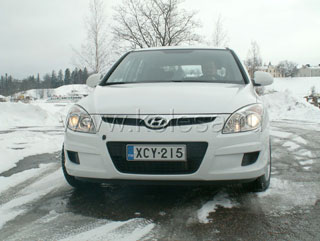 Symbol I in the name of this machine means inspiration. Well, it is worth admitting: in the line of Hyundai, there is probably no such inspired machine. On the other hand, I30 makes a thorough impression. It was collected tightly, and for some reason there is confidence that the glove compartment lid will not be loose during the warranty period and at its end, and the salon will not be filled with cheap violin.
Symbol I in the name of this machine means inspiration. Well, it is worth admitting: in the line of Hyundai, there is probably no such inspired machine. On the other hand, I30 makes a thorough impression. It was collected tightly, and for some reason there is confidence that the glove compartment lid will not be loose during the warranty period and at its end, and the salon will not be filled with cheap violin. And yet, in my opinion, he is some kind of too honest and correct. The hatchback is very similar to its close relative of CEED (by the way, these compact Hyundai and Kia are made on the same platform). Razumes, originality of cunning, if you want! In appearance or in dynamics, he lacks.
But for Hyundai, this is an unconditional step forward. Koreans do not plan to win the old light without reason: the car is not inferior in quality to competitors. Well, the trick is profitable.
Text: Philip Berezin
Photo: Philip Berezin


Source: Wheel magazine [April 2008]


